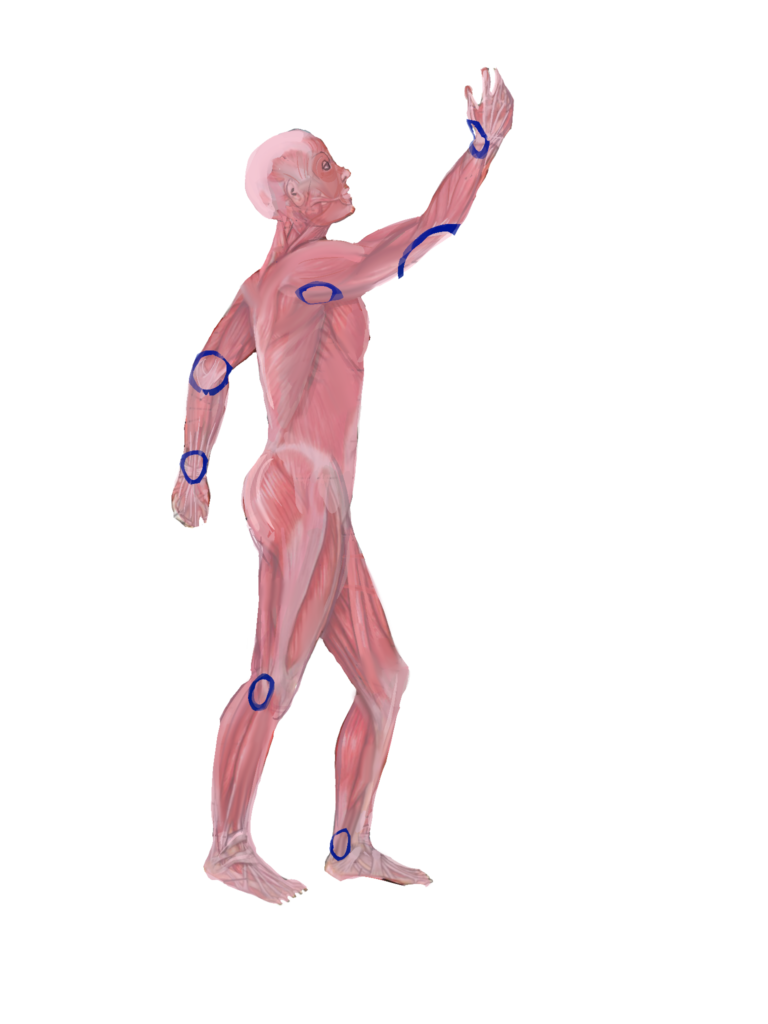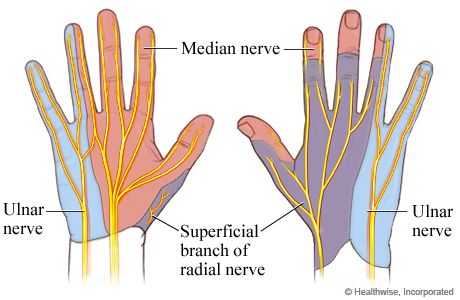
The above image was reviewed and created with a licensed physical therapist, to help identify places where nerves are close to the surface and rope might be placed.
The most common nerve injuries from rope are “handcuff thumb” and Ulnar nerve Damage.
Nerve Damage can be sensory (hot/cold/tingly/buzzing) or functional (affecting motor coordination). Because nerve damage can feel similar to circulation loss it’s important to come out of ties once circulation starts to cause any alteration in sensation. Nerve Damage is generally cumulative, which means each time damage is caused it compounds any existing damage. Because of this, it’s important to create good habits early on to prevent injury.
- Handcuff thumb aka radial nerve damage can be prevented by tying noncollapsible ties and not tying too tightly
- Ulnar nerve compression from the rope on the upper arms is also very common, this can be prevented by not tying rope over the upper arms, especially in positions where the nerve would be fully exposed (arms rotated backward like in strappado or box tie)
Other less common nerve injuries we’ve heard of include:
- Thoracic Outlet Syndrome (look for winging of the scapula and weakness in the arm)
- The femoral nerve affects the ability to extend the knee
- Foot Drop (perinatal nerve located in the ankle)
Bottoms can assist their tops by performing “hand checks” to confirm they still have full motor control of their hands. These checks are used by neurologists but kinksters have adapted them to help spot issues. The common hand checks are:
- Ulnar: Peace sign (against resistance)
- Ulnar: spread fingers wide
- Median: make a fist
- Median: “Scouts Honor” (pinky to thumb)
- Radial nerve: Rev your engines (make a fist and rotate forward)
- Radial: Thumbs up
- Radial: “OK” (Index finger to thumb)
Personally, I like to say “Stop (spread fingers), Promise to be good? (scouts honor) Ready? (thumbs up) Okay, Go (rev engine), Victory! (peace sign)” It’s dorky but it helps me remember to go through all my hand checks.

While it’s impossible to remove all risk with kink there are ways to mitigate risk, if you’re worried about nerve damage avoiding the TKs (box ties rotate the shoulders and arms behind the back) seems like the easiest way to us given it’s by the far the most common tie associated with injuries and nerve compression in the rope incident reports.